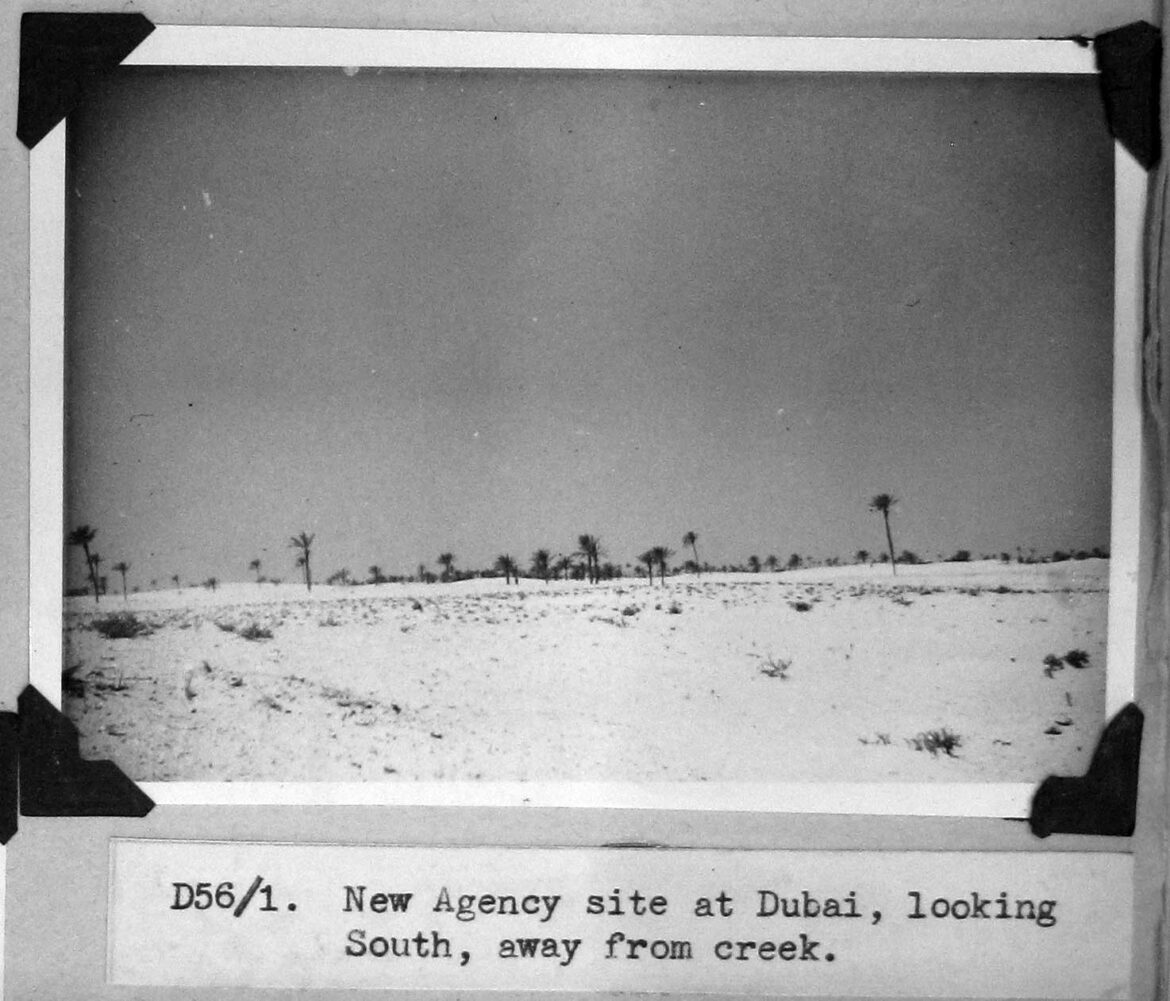“Gardens and Generators: Demarcating Dubai’s modernization” is published in Urban Modernity in the Contemporary Gulf, edited by Roberto Fabbri and Sultan Sooud Al Qassemi and published by Routledge (2021). Here is the first paragraphs from the piece. You can download the article for free here, along with many other fresh takes on architecture in the Gulf.
_______________________________
In 1947, the British government sought a “gift” of land from Dubai’s ruler, Saeed bin Maktoum bin Hasher Al-Maktoum. The process of selecting, securing, and designing for that land plot established architecture as a key component of the British government’s goals in Dubai, particularly to initiate a modernization campaign. On that land grant was to rise the new political agency, future home to both the British political agent and the modernization programme he was appointed to author. After over a century of irregular oversight and efforts to thwart advancement and growth at Dubai’s port, the new agency signalled a more dedicated British intervention into Dubai’s internal affairs and those of other Trucial States, this time for the proclaimed sake of modernization. The site studies, design process, and construction of the new Political Agency Trucial States would in the end presage how subsequent modernization projects were pursued in Dubai. With references to British public record documents, this paper provides evidence that Dubai’s modernization – defined as a centralized authority’s project of urban development and technological advancement – began several years earlier than many histories suggest. Nearly a decade before Dubai’s first hospital and 12 years before the production of Dubai’s first master plan – two oft-cited indications of Dubai’s twentieth-century advancement – the underlying rationale and guidelines that guided Dubai’s modernization were already evident in the creation of the political agency. At the donated site, modern architecture manifested first as a suite of procedures and then as a physical exhibition of modernization’s promises; the approach to both of these aspects of architecture was reflected in subsequent modernization projects.
In establishing the Political Agency Trucial States, the British Foreign Office pursued two seemingly contradictory policies: to further embed itself in the affairs of the Trucial States for the British economy’s commercial gain and to deny any “special responsibility” by isolating itself from local politics. Modern architecture helped achieve and maintain this paradox. Even before the eventual concrete foundations of modern bungalows and fence posts asserted the agency’s structural fixity, site surveys and drawings helped assemble the British government’s “irrefutable documentary evidence” to support its claim, in legal reasoning created for and by itself, that it rightfully occupied and exploited the site. At the same time, the type of intended construction, namely, a fenced-in compound comprising new buildings and more land than necessary, expressed that the site was cut off from the rest of Dubai, both physically and logically. More specifically, the ordering and administration to be pursued within the circumscribed confines of the land grant were expressed as set apart from everything beyond but nevertheless placed within proximity to the city, its apparent “prestige” intended to influence how future efforts of development would proceed. In this way, the pursuit of the political agency site both asserted Britain’s local legitimacy and proclaimed its legal exception.
Today, the city of Dubai is often criticized for its isolated developments, each pursued without apparent concern for creating links to other parts of the city. As this article will demonstrate, such an approach to urban development was already identifiable in the creation of a British political agency in the late 1940s and early 1950s. As early as 1947, architecture helped assert a British claim to a defined portion of Dubai; it also manifested how a designated site could be distinguished from the rest of the city and transformed for political and commercial gain. The acts pursued at the demarcated site presaged how large-scale development would transform the city, not through long-range plans but rather through the piecemeal assignation of meaning to delineated swaths of land. The isolated fixity of the early compound formulated the systems of modernization and ordering intended to be deployed on eventual sites beyond its fencing. Subsequent modernization efforts, increasingly determined by Dubai’s leadership more than the British political agency, included the city’s first hospitals, schools, a world trade centre, coastal ports, and the city’s first ‘free zone’.
[Read the rest here.]
